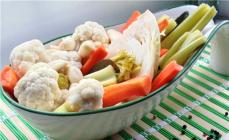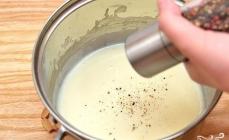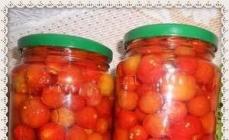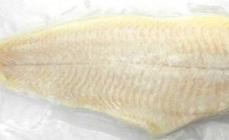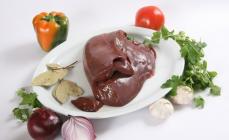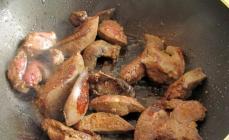We all remember well, as in childhood our grandmothers and mothers talked about what a useful and delicious product. Indeed, the benefit of cottage cheese is difficult to underestimate. It contains many essential organism of vitamins, minerals, protein and amino acids. All these indicators put cottage cheese to one of the leading places in terms of the usefulness of the human body among other dairy and dairy products.
What is the secret of popularity of skim products?
In the modern era, many people relate to their health with great attention, especially the weight indicator. Observing numerous diet, they choose products with reduced calorie. This circumstance pushes producers of lactic and fermented products to produce food products with reduced energy value.
It did not go around the treet and our "old acquaintance" - cottage cheese. The idea of \u200b\u200bmaking a tasty and attractive for thinning people, was embodied in the creation of low-fat curd. This product differs from the classic analogue of lower calorie. This is achieved by a decrease in fat content in the raw materials - milk. Thus, the benefit and the harm of which causes constant disputes of both nutritionists and ordinary consumers.
Features of the production of cottage cheese
As mentioned earlier, all the product is produced on the basis of cow milk subjected to pasteurization. The initial raw material is normalized solid or skimmed with the addition of the strata. In order to get cottage cheese from milk, a special start-up is added to the source products, consisting of a clean culture of lactic acid bacteria. Additionally, a renewed chloride calcium solution can be introduced. The bunch obtained during the process is separated from the serum. This is a ready-to-eat product. It refers in packaging for the sale to the consumer or serves as raw materials for confectionery production. It is important to note that in the production of cottage cheese, which will not be subjected to heat treatment before direct meal, only devoid of any microorganisms is applied.
What indicators should good cottage cheese fit?
In such a classic way, cottage cheese is prepared. The benefits and damage to the source product are directly dependent on the initial raw materials, as well as from the correctness of the implementation of all controlled parameters.

The quality product must comply with the following requirements:
- Protein content - 15-20%.
- Smell and taste - clean and fermented, extraneous shades are not allowed.
- Color - white, slightly yellowish, the presence of a cream shade is allowed. This indicator must be homogeneous throughout the mass.
- The consistency of the product depends on its fat. For cottage cheese with a high fat content, a gentle and homogeneous mass is considered a slightly staging structure. Degreased cottage cheese, the benefits and harm of which do not cause doubts, should be in the consistency of crumbly, slightly inhomogeneous, with a small separation of serum.
- In terms of microbiological studies, the content of the bacteria of the intestinal stick group (BGPP) in 0.00001 g and pathogenic microorganisms (including salmonella) in 25 g of the product are not allowed.
If you are such a degreased cottage cheese in front of you - the benefits and harm in it meet the standards. This means that there will be no negative consequences of its use in food. Except may be people with individual intolerance to the products and the presence of some chronic diseases.
Types of cottage cheese

If you subjected all kinds of fat classification curds, then you can select the following products:
- Fat, 18%.
- Bold, 9%.
- Non-fat or low-fat, 0.1 - 1.8%.
- Peasant, 5%.
- Table, 2%.
- Dietary, 4-11%.
- Dietary with fruit-berry filler, 4-11%.
- Non-fat, with fruit filler, 4%.
Among the diversity of these food products, you can choose an acceptable to taste and cottage cheese. People inclined to calculate calories and scrupulously compose their daily diet, choose a variant with less energy value. The benefits and harm of the cottage cheese of a soft gentle degreased cause some doubts. Is the dietary product is not inferior to his more calorie "fellow"? Does the original product do not lose with the extracted dairy fat your beneficial properties? Does harmful qualities acquire?
Classic cottage cheese and its useful properties
Let's think about the composition there are fat and low-fat cottage cheese. The benefits and harm of each of the products are due to their composition.

Cottage cheese Classic with fat content of at least 9% contains the following substances that definitely benefit the human body:
- Calcium. This mineral performs many functions in the human body: affects the reduction of muscles, carrying out nerve impulses, strengthens the bone tissue, helps blood cloud and much more. The feature of calcium in dairy products is that it is in a complex with lactic acid with the formation of lactate. This substance is available to the human body and is absorbed quite well. The maximum suction of calcium contributes to fat-soluble vitamin D, which is also contained in dairy products with natural levels of fat.
- Protein. This is the main building material. Based on amino acids, of which proteins are consisting, all the fabrics and organs of the human body are being built. The feature of the protein of cottage cheese is his absorbability.
- Therefore, it is cottage cheese to consult children in food, patients with violation of exchange processes and elderly people. Only in dairy products contained a special province of casein, which normalizes the exchange of fats in the human body.
- Vitamins. Cottage cheese is rich in various vitamins: D, E, A, B2, B1, B12, B6, PP. These nutrients contribute to the full work of the human body, regulating the activities of organs and systems. Vitamins E and A are natural antioxidants and prevent the aging and formation of serious diseases such as cancer.
- Minerals. In addition to calcium in cottage cheese, potassium, iron, phosphorus, magnesium are contained. All of them play a huge role in the functioning of the human body. Such a balanced composition puts all points over "and" on the question: "Cottage cheese - benefit and harm?" The beneficial properties of this ferocular product will certainly dominate the possible negative influence.
- Unique substances - Kefalin and lecithin phospholipids - are contained in milk fat. They are wonderful in that they are building materials for all cell membranes and participate in the neural regulation of vital processes.
- Among other amino acids in the cottage cheese there is methionine. This special substance has a hepatoprotective effect and protects liver cells from fatty dystrophy. Cottage cheese is useful for some endocrine disorders associated with obesity, gout, thyroid dysfunction.
The balanced natural composition of this product makes even skeptics to stop disputes about whether cottage cheese is useful. Cottage cheese, the benefits and the harm of which are incommensurable among themselves, is the most valuable product for people who are weakened by the disease, as it contributes to the speedy restoration and normalization of all the most important functions of the body.
Can cottage cheer causing the body?
Nutritionists still advise with some caution to consume cottage cheese in the following cases:
- For disease atherosclerosis.
- With individual intolerance to the protein of milk.
- With severe kidney diseases.
- With overweight.
This group should limit the use.
Do not forget about the expiration date!
Cottage cheese, made by classical recipe, is able to be stored in the refrigerator no more than two days at temperatures below + 8 ° C. After that, the product is actively multiplying the bacteria, and the processes of rotten rotation occur. If you eat overdue cottage cheese, you can get serious poisoning. Be sure to pay attention to the suitability of the product! If the manufacturer indicates the shelf life greater than 2-3 days, it means that preservatives were added to cottage cheese. The only thing that can extend the life of the product is a vacuum packaging. In it, cottage cheese can be stored for 30 days. An important condition is the integrity of the packaging should not be violated. After opening a vacuum product, it should be used for 2 days.

What are the features of low-fat curd?
Now let's see in more detail in what is degreased cottage cheese. Is the benefit or harm lies in this mysterious product? In fact, this cottage cheese is different from the above-described its food and energy value. In low-calorie cottage, fat content is minimized. This gives it the properties of the dietary product. This means that from the initial raw materials - milk - by separation was removed all or almost all milk fat. Lowering people it makes it possible to use this product and not fear for excess weight.
Is low fat curd useful?
But did all the healing benefits of cottage cheese have preserved? Degreased cottage cheese together with the high-calorie component is partially or completely deprived of the following substances and properties:

Judge for yourself, what can give the body of cottage cheese fat fat? The benefits or harm of cottage cheese with reduced calorie causes disagreements from nutritionists. Some say that this product is deprived of most of their amazingly useful properties along with fat. Other are argued that the light product becomes available to people with obesity and atherosclerosis. Something strangely, both those and others in their own way.
Is degreasing cottage cheese harmful?
By itself, degreased cottage cheese is not bad. When it is eaten, the body receives valuable easily sued protein, vitamins, trace elements and other biologically active substances. But the thing is that not many will have to make the "lean" taste of such cottage cheese. Some it may seem empty or sour. Enontending producers of dairy products quickly found a suitable solution. In low fat curd, they began to add sugar or other sweeteners, flavors, fruit or berry fillers. Most of them have a synthetic nature and for the body are alien substances. Think that useful can bring your body with such cottage cheese? Degreased cottage cheese, the benefits and harm of which cause doubts - this is a product saturated with flavors and preservatives. Think about that good in such a low-calorie nutrition?

By adding sweeteners, the energy value of the product may exceed the same indicator of fatty classic cottage cheese. Chemical components that improve the taste can make an imbalance into the body, disrupt metabolic processes and cause some diseases. Thus, sweet deception can bring serious health with health.
Power specialists advise to approach this issue reasonably. If you do not have a severe disease (atherosclerosis or renal failure), then you should not fall into a hysteria about the dilemma: what kind of cottage cheese is better and more useful to eat in food? The fight against excess weight should be competent. It is better to eat classic cottage cheese, enjoy his wonderful creamy taste and enrich your body with unique natural useful substances. And the calories are very easy to spend using a workout in a gym or jogging in a shady park. Be healthy and enjoy life!
Cottage cheese is a popular fermentation product, which is produced in the process of rolling milk and further separation of serum. This is a source of a full-fledged protein required for the synthesis of bone-muscular tissue. Useful for bones, nervous system, heart and vessels.
For dietary food, low-fat cottage cheese is used, which is a low-calorie product. In 100 grams of only 71 calorie, but at the same time all useful properties are saved.
The benefits of cottage cheese for human health
If you briefly describe the benefit of cottage cheese, then three important items will be:
- The composition of cottage cheese includes vitamins A, B1, B2, C, E, RR and basic amino acids methionine and tryptophan, contributing to blood formation and normalizing nervous system activities.
- It contains both beta-carotene, normalizing metabolism in the body. And also a large number of trace elements necessary for the normal functioning of the human body (potassium, magnesium, iron, zinc, phosphorus, fluorine, selenium, etc.).
- In contrast to the components of other foods of animal origin, the curd protein has neutral acidity and is easily absorbed. It is consumed to digest it less gastric juice and enzymes, so it approaches even people with diseases of the gastrointestinal tract and is the basis of many diets.
Types of cottage cheese, their calorie and nutritional value
By the method of cooking, cottage cheese happens:
- acidic (prepare from low fat milk when exposed to lactic acid);
- acid-renewed (with the addition of a renewed enzyme).
Depending on the fatty of milk used in the production process, the following varieties of this product are distinguished:
- fat (19 - 23%);
- classic (4 - 18%);
- low-fat (1.8 - 2%);
- degreased (up to 1.8%).

There is such a classification:
- Home. Cottage cheese who is preparing at home can have a different degree of fatty, and therefore, different energy value. Caloriciness in homemade cottage cheese varies within 230 - 265 kcal per 100 g. It is very useful for the body, but for those who want to lose weight, it is hardly suitable.
- Grainy. Granular, which is a cottage cheese grain with the addition of salted cream, caloric rate per 100 grams is significantly lower: 100 - 150 kcal. It contains a minimum amount of fat (0- 0.9%) and is widely used with dietary diet.
- Calcined. Contains an additive in the form of calcium chloride, with low calorie content, it contains a large amount of protein - up to 60%
The fatty of cottage cheese is directly related to its nutritional properties. Data on the nutritional value of the most common types of its species is presented in the table below.
| Type of cottage cheese (100 g) | Calorie (kcal) | Proteins (g) | Fats (g) | Carbohydrates (d) |
|---|---|---|---|---|
| breased 0% | 78,98 | 15,92 | 0,36 | 2,59 |
| breased 5% | 116,20 | 15,00 | 5,00 | 2,40 |
| breased 9% | 154,95 | 16,18 | 8,51 | 2,78 |
| fatty 15% | 183,82 | 15,38 | 12,93 | 1,76 |
| battime 20% | 165,00 | 12,40 | 12,25 | 2,45 |
| fat content 23% | 301,07 | 9,55 | 21,44 | 16,99 |
The optimal option for inclusion in the daily diet is cottage cheese with fat 2 - 5%. With relatively low caloric content, the amount of nutrients in it is more balanced than in its degreased analogue.
Impact on the caloric content of products added to cottage cheese
The caloric content of cottage cheese is influenced by products that are added to it to improve taste and enhancing useful properties. It is most often used in food with dried fruits, nuts, honey, various types of jams and jams, fresh berries and fruits, vegetables and greens.
The table shows the calorie content of some products that can be added to cottage cheese.
| Product (100 g) | Calorie (kcal) |
|---|---|
| Orekhi | |
| walnut walnut | 698 |
| peanut | 571 |
| almond | 694 |
| hazelnut | 707 |
| cashew | 633 |
| Dried fruits | |
| dried apricots | 234 |
| raisins | 262 |
| prunes | 245 |
| phenic | 305 |
| fig | 270 |
| Candied fruit | |
| a pineapple | 339 |
| banana | 346 |
| strawberry | 286 |
| orange | 300 |
| melon | 319 |
| Honey | |
| lime | 323 |
| buckwheat | 301 |
| akacieva | 335 |
| sunflower | 320 |
| floral | 303 |
Cottage cheese can be used not only as an independent product, but also be the basis for many dishes. Those who sits on a diet, it is important to know the caloric content of each of them.
- Dumplings with cottage cheese calorie content - 203 kcal when used as a fascinated cottage cheese, 19% - 284 kcal / 100 g).
- Cheesecakes from low-fat curd (2%) contain 183 kcal.
- Cottage cheese casserole with a low percentage of fat - 168 kcal (with fatty 5 - 9% - from 213 to 249 kcal).
- Cottage cheese with sour cream (20% fat or more) is from 139 to 228 kcal.

An alternative to traditional options that are quite calories, dietary dishes. For example, cheese can not fry in oil, but bake in the oven.
Tip from Irina Silina's nutrition
Pay attention to the latest weight reduction technique. Suitable for those who are contraindicated sports.
Easy to prepare cottage cheese omelet - a high protein and low calorie dish. Allows you to diversify the menu and a small-calorie cottage cheese-carrot casserole.
Another useful high-protein dish for dietary food is called "Belip" ("without lipids", i.e. without fats): low-fat cottage cheese, cod fillets, crude chicken squirrels and onions are passed through the meat grinder, and then baked in the form of bikes.
Is it possible to eat cottage cheese when weight loss?
Cottage cheese is not simply important for the body, with its use raises a feeling of satiety. It allows you to eat diverse, without gaining excess weight, normalizes digestion, contributes to the removal of toxins from the body.
The product has a lipotropic effect (enhances the fat exchange), regulates the level of sugar and cholesterol in the blood. High calcium content in cottage cheese not only strengthens bone tissues, but also when interacting with indispensable amino acids activates fat burning.
Despite the opinion that in dietary nutrition, such food is indispensable, more and more information appears that degreased cottage cheese (0.1 - 0.8%) does not benefit the body. With a shortage of fats in the body, serious disorders may arise. For weight loss while maintaining a full nutrition, the product is suitable with a fat content of 1.8 to 5%.
It is also necessary to remember that in production, transhira, preservatives, stabilizers and other harmful components can be added to cottage cheese. For example, starch is often used to improve the consistency.
You can check its presence by adding a pharmacy iodine. If the stains of iodine appear, it means that there is a starch that increases its calorie content and slowing down the normalization process. Usually starch is contained in pasty cottages and goods with the inscription on the label "Curd Product".
For weight loss and maintaining health, it is better to buy ordinary degreased cottage cheese and add fruits, berries and other components to it.
Current consumption and storage rates
This dairy product is undoubtedly useful and helps to lose weight, but still it is a natural protein-calcium concentrate, and therefore it is necessary to observe the measure. The overaction of the protein may adversely affect the work of the kidneys.

A product of increased fatty increases cholesterol levels, which leads to the obesity and development of atherosclerosis. Granular cottage cheese is more useful, although it has some contraindications, such as individual intolerance.
According to nutritionists, the average protein intake is 0.86 - 0.95 g / kg body weight. That is, the average man weighing 55 kg can use 47 g of protein per day. But since it is known that 10 - 15% of food protein do not absorb, the amount should be slightly increased (about 50 g).
In a pack of cottage cheese, approximately 32 g of protein. So, 1.5 - 2 packs are for such a person the daily rate of protein, without additional products. But during the day we usually use another protein food, so specialists recommend that there are no more than 200 g of cottage cheese per day.
Another important point is the deadlines for the storage of cottage cheese. This product is unstable, so even with small disorders of the temperature regime, its quality deteriorates significantly.
0 percent cottage cheese is saturated with vitamins A, C, RR, group B, as well as potassium minerals, magnesium, calcium, phosphorus, sodium, iron.
Low calorie degreased cottage cheese per 100 grams: Lose weight with benefit
Low caloric content of low-fat curd per 100 grams allows you to use this product with any diets.
Nutritionists argue that such dairy products are indispensable for losing weight, since such a curd is a sufficiently large amount of protein (more than 15 g). Recall that in accordance with the current provisions of WHO, men are recommended to consume 0.75 g of protein per 1 kg of weight; For women, this indicator is 0.5 g of protein per 1 kg of weight.
Calorie 1% cottage cheese by 100 grams
Calorie 1% cottage cheese per 100 grams 79 kcal. In 100 g of the product contained 16.2 g of protein, 1 g of fat, 1.3 g of carbohydrates. Cottage cheese is saturated with fluorine, copper, calcium, magnesium, is recommended for strengthening bones, normalization of the heart.
In cooking, 1 percent cottage cheese is used to prepare casserole, cakes, pancakes, dumplings, cheesecakers.
Cottage cheese calorie 2 percent per 100 grams
Cottage cheese calorie with 2 percent of fat content per 100 grams of 102 kcal. In 100 grams of product 17.9 g of protein, 2 g of fat, 3.4 g of carbohydrates. 2 percent cottage cheese is saturated with amino acids. Due to the rich amino acid composition, the proteins of the dairy product are absorbed significantly better than meat or fish proteins.
Cottage cheese calorie 5 percent per 100 grams
Caloric content of 5 percent cottage cheese is 100 grams 120 kcal. In 100 g of product 17.1 g of protein, 5 g of fat, 1.9 g of carbohydrates. Thanks to a good vitamin and mineral composition, 5 percent cottage cheese is recommended to improve the operation of the gastrointestinal tract, increasing immunity, organism saturation.
Cottage cheese calorie 9 percent per 100 grams
Cottage cheese calorie 9 percent per 100 grams of 160 kcal. In 100 g of the product contained 16.8 g of protein, 9 g of fat, 2.1 g of carbohydrates. 9 percent cottage cheese is indispensable after transferring viral infections to increase immunity in the postoperative period.
Contraindications to the use of the product are disorders in the work of the liver, in which it is necessary to minimize the flow of calcium and protein into the body.
Calorie of homemade cottage cheese per 100 grams
Calorie of homemade cottage cheese per 100 grams when preparing a product from 1 percent milk 167 kcal. In 100 g of such cottage cheese 17.7 g of protein, 6.5 g of fat, 11.4 g of carbohydrates.
Recipe for cooking cottage cheese:
- 3 liters of acidic 1 percent milk are mixed with 0.6 liters of kefir, heated on slow heat to a temperature of 35 ° C;
- while the milk is heated, covered with a folded colander folded in 6 layers (the edges of the fabric must freely squeeze out of the colander);
- the colander is attached to the serum drain tank;
- heated milk leaning into a colander and flows a bit in it;
- do not press the resulting mass, tighten the tissue angles by the node;
- the knitted tissue is suspended above the serum tank;
- after a few hours, the excess liquid stalks, and the cottage cheese will be ready.
Cottage cheese calorie with sour cream and sugar per 100 grams
Cottage cheese calorie with sour cream and sugar per 100 grams of 169 kcal. In 100 g of product 13 g of protein, 8.6 g of fat, 9.3 g of carbohydrates. To prepare a sweet meal, 0.2 kg of cottage cheese with 25 g of sugar must be pulled, mix the resulting mass with 40 g sour cream.
Cottage cheese calorie with raisins per 100 grams
Cottage cheese calorieness with raisins per 100 grams depends on the number and type of products included in the sweet dish. When mixing 10 g of raisins and 90 g of cottage cheese, the calorie amount will be:
- for cottage cheese 0 percent - 90.3 kcal;
- for cottage cheese, 1 percent - 97.5 kcal;
- for cottage cheese 2 percent - 118.2 kcal;
- for cottage cheese 5 percent - 134.4 kcal;
- for cottage cheese 9 percent - 170.4 kcal;
- for home curd - 176,7 kcal.
Calorie of grain cottage cheese per 100 grams
Calorie of grain cottage cheese per 100 grams with 5% fat product 105 kcal. In 100 g of such cottage cheese 12.7 g of protein, 5 g of fat, 2.4 g of carbohydrates. As part of a grain product hardener, swarming, skimmed milk, enzyme preparation, salt, cream, potassium sorbate.
The benefits of cottage cheese
Known Next benefit of cottage cheese:
- due to the high content of easily digestible proteins, cottage cheese is useful to people of all ages;
- degreased cottage cheese is saturated with vitamins and minerals, has a minimal calorieness, which makes it a mandatory component of dietary food;
- non-fat cottage cheese is irreplaceable for children aged 3, it is necessary to maintain a protein balance in the body when breastfeeding and pregnancy;
- minerals of cottage cheese strengthen their teeth, bones, hair, ensure the health of the vessels and the heart muscle;
- cottage cheese is saturated with tryptophan and methionine, warning liver obesity, normalizing the functions of the gallbladder;
- minerals of cottage cheese are important for the health of the nervous system.
Harm cottage cheese
The harm of cottage cheese is manifested in the use of poor-quality product or overeating. When buying, be sure to pay attention to all the requirements of thermal processing and storage of cottage cheese.
Contraindications to the use of cottage cheese are:
- exacerbated kidney diseases;
- elevated cholesterol;
- a tendency to obesity and atherosclerosis;
- intolerance of the product;
- exacerbations of the diseases of the stomach and intestines.
Cottage cheese fat, 0.6% fatit is rich in such vitamins and minerals as: vitamin B2 - 13.9%, vitamin B12 - 44%, vitamin H - 15.2%, vitamin PP - 20%, calcium - 12%, phosphorus - 23.6%, cobalt - 20%, molybdenum - 11%, selenium - 54.5%
What is useful degreased cottage cheese, 0.6% fat
- Vitamin B2. Participates in oxidation reactions, contributes to an increase in the susceptibility of color with a visual analyzer and dark adaptation. Insufficient consumption of vitamin B2 is accompanied by a violation of the condition of the skin, mucous membranes, a violation of light and twilight vision.
- Vitamin B12. Plays an important role in metabolism and transformations of amino acids. Folate and Vitamin B12 are interrelated vitamins, participate in blood formation. The lack of vitamin B12 leads to the development of partial or secondary flange failure, as well as anemia, leukopenia, thrombocytopenia.
- Vitamin N. Participates in the synthesis of fats, glycogen, the metabolism of amino acids. Insufficient consumption of this vitamin can lead to a violation of the normal state of the skin.
- Vitamin RR Participates in oxidative reactionary reactions of energy metabolism. Insufficient consumption of vitamin is accompanied by a violation of the normal state of the skin, the gastrointestinal tract and the nervous system.
- Calcium It is the main component of our bones, acts as a regulator of the nervous system, is involved in muscle contraction. Calcium deficiency leads to the demineralization of the spine, pelvic bones and lower extremities, increases the risk of osteoporosis.
- Phosphorus Takes part in many physiological processes, including energy exchange, regulates acid-alkaline balance, is included in phospholipids, nucleotides and nucleic acids, necessary for the mineralization of bones and teeth. The deficit leads to anorexia, anemia, rickets.
- Cobalt Included in vitamin B12. Activates the enzymes of fatty acid exchanging and folic acid metabolism.
- Molybdenum It is a cofactor of many enzymes that ensure the metabolism of sessing amino acids, purines and pyrimidines.
- Selenium - the essential element of the antioxidant system of protecting the human body, has an immunomodulatory action, participates in the regulation of the action of thyroid hormones. The deficiency leads to a disease of Kashin-Bek (osteoarthritis with multiple deformation of the joints, spine and limbs), diseases of Keshan (endemic myocardiopathy), hereditary thrombaster.
You can see a complete directory of the most useful products in the app.
Cottage cheese (also permissible stress - cottage cheese; from overall. twitogue - from the same basis as create, literally - "made solid milk") is an fervent product, a variety of cheese, traditional for Eastern and Northern Europe.
Cottage cheese is obtained by roding milk with subsequent removal of serum. It is officially accepted to classify cottage cheese developed by the traditional way, in content in it fat. Accordingly, the fat (18%) is distinguished, bold (9%) and low-fat curd (no more than 3%). A soft dietary cottage cheese is also attributed to the bold.
Composition of cottage cheese
Nutrients, vitamins, trace elements 100 g:
Squirrels: 16.7 g - Of these, 70% is casein, the remaining 30% is fast protein., Fats: 0.5 - 15 g - give preference to low-fat curd, carbohydrates: 2.0 g,
Vitamin A: 0.08 mg, vitamin B1: 0.04 mg, vitamin B2: 0.3 mg, vitamin C: 0.5 mg, vitamin PP: 0.4 mg
Iron: 0.4 mg, potassium: 112.0 mg, calcium: 164.0 mg, magnesium: 23.0 mg, sodium: 41.0 mg, phosphorus: 220.0 mg
Useful properties of cottage cheese
Cottage cheese contains calcium and phosphorus, which are involved in the formation of the bone system, so it is recommended to include in the menu of children and pregnant women. Only 300 grams of cottage cheese eaten per day, can satisfy the daily need of the human body in protein. Due to the fact that the milk protein is much easier to digest than meat, cottage cheese is considered a dietary product, especially useful in childhood and old age.
Minerals that are part of cottage cheese are involved in the production of hemoglobin, so it is useful to eat for the prevention of Malokrovia. Cottage cheese is included in the diet of patients with ulcer of the stomach, chronic gastritis, diseases of the gallbladder, with cardiovascular diseases, hypertension. Non-fat cottage cheese advise consuming sugar diabetes.
Contraindications
In use of cottage cheese, you need to observe the measure - eat no more than 300 grams of the product per day.
High-quality cottage cheese is a homogeneous weight of white or light yellow, with a thick pleasant aroma, which should not be sour or in a bit. The taste of fresh cottage cheese is soft and gentle, neutral, without severe acid or salinity.
In the cooking, this ferocular product is used both in the fresh form and the heat treatment. Cottage cheese is unique in that it is equally well combined with sweets, and with salty products. Most useful and delicious fresh, just cooked homemade cottage cheese. It can eat as dessert, mixing with a small amount of sugar, honey, cream or jam. Salted cottage cheese with the addition of sour cream, finely chopped greenery, garlic and sharp seasonings.
The stores sell a huge number of curd desserts - with raisins, fruit, chocolate and other fillers. Also, cottage cheese is used in baking - in the composition of the dough for cakes, like a filling for pies and cheesecakes. From this product make casseroles - sweet or salty, with the addition of vegetables, make dumplings with cottage cheese filling, bake cheese and pancakes with cottage cheese. A simple and tasty dish is "lazy dumplings", which are boiled from cottage cheese, mixed with a small amount of flour. The recipe for cottage cheese Easter is also popular.
* Caloric content is given by 100 grams of the product.
| Products | Proteins, G. | Fats, G. | Carbohydrates, G. | Calorie, kcal |
| Curd serum | 0.8 | 0.2 | 3.5 | 20 |
| Cheese cheese | 18.6 | 3.6 | 18.2 | 183 |
| Cheese Product Paris Burenka | 7.2 | 22.0 | 2.0 | 232 |
| Cheek B.Yu.Leksandrov 5% in dark chocolate | 13.5 | 12.9 | 29.0 | 286 |
| Smell B.Yu. Alksandrov in Milk Chocolate | 8.4 | 28.2 | 30.7 | 410 |
| Smel B.Yu. Alksandrov in Dark Chocolate | 8.6 | 30.8 | 27.0 | 419 |
| Smel B.Yu. Alksandrov with Vanilla | 2.8 | 6.5 | 10.5 | 242 |
| Glazed routine | 8.5 | 27.8 | 32.0 | 407 |
| Cheese glazed potato | 7.0 | 23.4 | 47.6 | 417 |
| Routine glazed with filling | 9.5 | 21.3 | 36.0 | 374 |
| Cottage cheese 0.1% | 16.7 | 0.1 | 2.0 | 76 |
| Cottage cheese 0.2% | 18.0 | 0.2 | 1.8 | 81 |
| Cottage cheese 0.6% | 18.0 | 0.6 | 1.8 | 88 |
| Cottage cheese 1.8% | 18.0 | 1.8 | 3.3 | 101 |
| Cottage cheese 11% | 16.0 | 11.0 | 1.0 | 170 |
| Cottage cheese 18% | 14.0 | 18.0 | 2.8 | 232 |
| Cottage cheese 4% | 15.7 | 4.0 | 1.4 | 104 |
| Cottage cheese 5% | 17.2 | 5.0 | 1.8 | 121 |
| Cottage cheese 8% | 15.0 | 8.0 | 1.5 | 138 |
| Cottage cheese 9% | 16.7 | 9.0 | 2.0 | 159 |
| Cottage cheese Valio 0.3% | 11.0 | 0.3 | 4.2 | 65 |
| Homemade cottage cheese (from milk 1%) | 17.6 | 6.4 | 11.3 | 166 |
| Cottage cheese house in the village 0.1% | 10.0 | 0.1 | 3.5 | 55 |
| Cottage cheese grain cheese home | 14.0 | 4.0 | 2.0 | 100 |
| Cottage cheese Ostankinsky degreased | 13.5 | 0.1 | 3.3 | 68 |
| Cottage cheese Prostokvashino 2% low-fat | 18.0 | 2.0 | 3.3 | 103 |
| Cottage cheese Prostokvashino 5% grain | 12.7 | 5.0 | 2.4 | 105 |
| Cottage cheese Prostokvashino 5% grain with strawberries | 10.3 | 5.0 | 12.5 | 127 |
| Cottage cheese Prostokvashino 5% grain with Malina | 10.3 | 4.0 | 12.2 | 126 |
| Cottage cheese Prostokvashino 5% grain with peach | 10.3 | 4.0 | 13.1 | 130 |
| Cottage cheese Prostokvashino 5% grain with blueberries | 10.3 | 4.0 | 13.1 | 127 |
| Cottage cheese Prostokvashino 5% Classic | 16.0 | 5.0 | 3.0 | 121 |
| Cottage cheese Prostokvashino 9% Classic | 16.0 | 9.0 | 3.0 | 157 |
| Cottage cheese Tofu | 8.1 | 4.2 | 0.6 | 73 |
| Curd | 7.1 | 23.0 | 27.5 | 341 |
| Curd mass with raisins | 6.8 | 21.6 | 29.9 | 343 |
| Curd Mass With Kuragoy | 9.0 | 23.0 | 29.0 | 357 |
| Curl Rastry with apricot | 6.3 | 3.5 | 14.5 | 115 |
| Curl Rastry with cherry | 6.3 | 3.5 | 14.5 | 115 |
| Cottage cheese rubbish with strawberries | 6.3 | 3.5 | 14.5 | 115 |
| Cottage cheese rubry with blueberries | 6.3 | 3.5 | 14.5 | 115 |
| Curd Miracle Cherry Cherry | 4.4 | 4.0 | 20.2 | 134 |
| Cottage cheese miracle kiwi banana | 4.4 | 4.2 | 16.9 | 123 |
| Curd of a miracle of strawberry | 4.4 | 4.2 | 18.6 | 130 |
| Cottage cheese miracle strawberry strawberry | 4.4 | 4.0 | 19.4 | 131 |
| Cottage cheese miracle peach pear | 4.4 | 4.2 | 18.9 | 131 |
| Curl Miracle Blueberry | 4.4 | 4.2 | 19.0 | 131 |
| Curl miracle chocolate | 4.4 | 4.2 | 19.1 | 132 |

